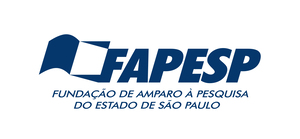Use este identificador para citar ou acessar este item:
https://repositorio.ufscar.br/handle/ufscar/15580| DOI: | https://doi.org/10.1016/j.rmed.2020.106173 |
| Título: | Non-invasive ventilation improves exercise tolerance and peripheral vascular function after high-intensity exercise in COPD-HF patients |
| Assunto: | COPD;Endothelial function;Exercise test;Heart failure;Ventilation |
| Descrição: | Aim: Evaluate the acute effects of non-invasive positive pressure ventilation (NiPPV) during high-intensity exercise on endothelial function in patients with coexisting chronic obstructive pulmonary disease (COPD) and heart failure (HF). Methods: This is a randomized, double blinded, sham-controlled study involving 14 COPD-HF patients, who underwent a lung function test and Doppler echocardiography. On two different days, patients performed incremental cardiopulmonary exercise testing (CPET) and two constant-work rate tests (80% of CPET peak) receiving Sham or NiPPV (bilevel mode - Astral 150) in a random order until the limit of tolerance (Tlim). Endothelial function was evaluated by flow mediated vasodilation (FMD) at three time points: 1) Baseline; 2) immediately post-exercise with NiPPV; and 3) immediately post-exercise with Sham. Results: Our patients had a mean age of 70 ± 7 years, FEV1 1.9 ± 0.7 L and LVEF 41 ± 9%. NIPPV resulted in an increased Tlim (NiPPV: 130 ± 29s vs Sham: 98 ± 29s p = 0.015) and SpO2 (NiPPV: 94.7 ± 3.5% vs Sham: 92.7 ± 5.2% p = 0.03). Also, NiPPV was able to produce a significant increase in FMD (%) (NiPPV: 9.2 ± 3.1 vs Sham: 3.6 ± 0.7, p < 0.05), FMD (mm) (NiPPV: 0.41 ± 0.18 vs Sham: 0.20 ± 0.11, p < 0.05), Blood flow velocity (NiPPV: 33 ± 18 vs Baseline: 20 ± 14, p < 0.05) and Shear Stress (SS) (NiPPV: 72 ± 38 vs Baseline: 43 ± 25, p < 0.05). We found correlation between Tlim vs. ΔSS (p = 0.03; r = 0.57). Univariate-regression analysis revealed that increased SS influenced 32% of Tlim during exercise with NiPPV. Conclusion: NiPPV applied during high-intensity exercise can acutely modulate endothelial function and improve exercise tolerance in COPD-HF patients. In addition, the increase of SS positively influences exercise tolerance. |
| Autor(es): | Goulart, Cássia da Luz Caruso, Flávia Rossi Araújo, Adriana Sanches Garcia de Arêas, Guilherme Peixoto Tinoco Moura, Silvia Cristina Garcia de Catai, Aparecida Maria Mendes, Renata Gonçalves Phillips, Shane A. Arena, Ross Silva, Andréa Lúcia Gonçalves da Silva, Audrey Borghi |
| URI: | https://repositorio.ufscar.br/handle/ufscar/15580 |
| Outros identificadores: | https://doi.org/10.1016/j.rmed.2020.106173 |
| Fomento: | Conselho Nacional de Desenvolvimento Científico e Tecnológico (CNPq) Coordenação de Aperfeiçoamento de Pessoal de Nível Superior (CAPES) Fundação de Amparo à Pesquisa do Estado de São Paulo (FAPESP) |
| Número do Projeto: | Processo nº 2015/26501–1, Fundação de Amparo à Pesquisa do Estado de São Paulo (FAPESP) Código de Financiamento 001 - CAPES Processo nº 141803/ 2019 -3 - Conselho Nacional de Desenvolvimento Científico e Tecnológico (CNPq) Processo nº 2018/03233-0, Fundação de Amparo à Pesquisa do Estado de São Paulo (FAPESP) |
| Termo de uso: | Attribution-NonCommercial-NoDerivs 3.0 Brazil |
| Data: | |
| Data de Disponibilização: | 10-Fev-2022 |
| Formato: | |
| Tipo: | Dataset |
| Editora / Evento / Instituição: | Universidade Federal de São Carlos |
| Idioma : | |
| Aparece nas coleções: | Repositório dados - UFSCar |
Este item está licenciada sob uma Licença Creative Commons

